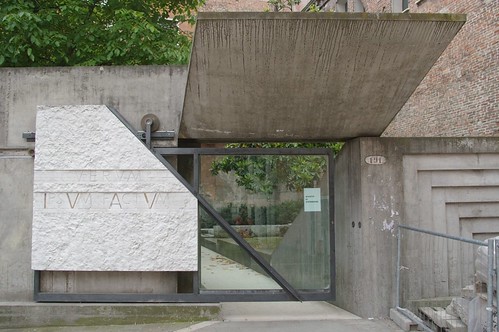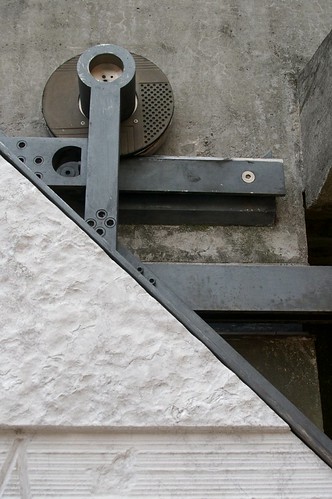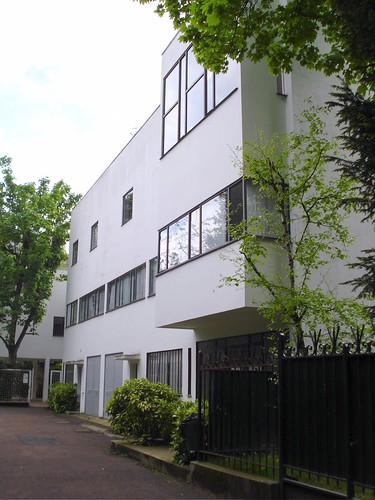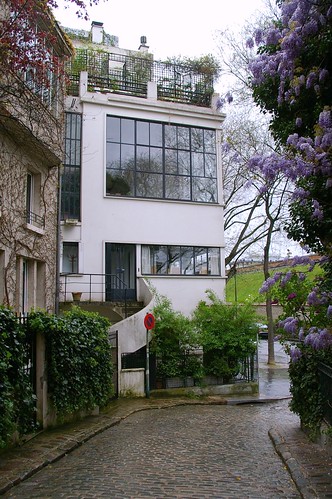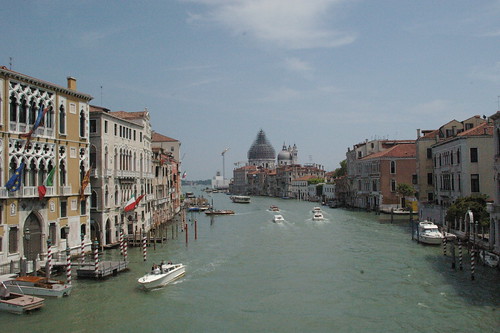
Venice is in the once remarkably strategic but now unfortunate position of being located on the Venetian lagoon in the Adriatic Sea which was completely built out a long time ago. This has resulted in practically no expansion or development and created a city which I suspect looks much like it has for the past couple of hundred years. Whilst this creates an incredibly beautiful city and has been called one of the most beautiful cities in the world it feels as if it now exists solely for tourism and only an image of its former glory. The hoardes of tourists, 20 million a year, all but destroy the atmosphere and character of the city and transform it, as Andy said after his visit to the Venice Biennale last year, into a theme park. After a quick look at a crowded Piazza di San Marco I headed away from the main street which links the train station to San Marco via the Ponte di Rialto and along which one can barely walk because of the crowds, in search of a couple of works by Carlo Scarpa, a few important churches and Palazzo and quieter streets and canals.
Away from the main tourist strip Venice feels like a sleepy town within which the crowds and over zealous enthusiasm for cheaply made Carnivale masks and 70 euro Gondola rides seems completely alien. Quiet lanes and canals with boats sliding silently along, washing hanging across narrow lanes and quiet stones that have been there for hundreds of years. The streets, canals and buildings are the same as the ones filled with tourists but more beautiful and full of character without them. I imagined if I lived in one of the beautiful interiors of the old houses it would be a wonderful place to simply eat, sleep, fish and read and do little else as everything has already been built, its famous sons have already produced great works of art and literature and there is little room left for anything one would want to produce.
Carlo Scarpa's works were small moments of technical genius, lovingly crafted and it was evident that every single piece of material in his small interventions in the existing fabric of Venice had been lovingly considered, crafted and joined to its neighbour to create an exquisite piece of Architecture which expressed the beauty of manipulating materials into a door, wall, hinge or slab of stone.
I awoke at 7.00am on Sunday morning to return to Piazza San Marco without the tourists and in the soft early morning light felt like the authors who have written that Piazza San Marco is one of the greatest urban spaces in the world had a point. I am glad I got to see it without the tourists and appreciate it in a way that I imagine it has existed for the past few hundreds years prior to the combination of massive population growth in the past hundred years and budget airlines that has created a tourist industry that the city is barely capable of sustaining.


